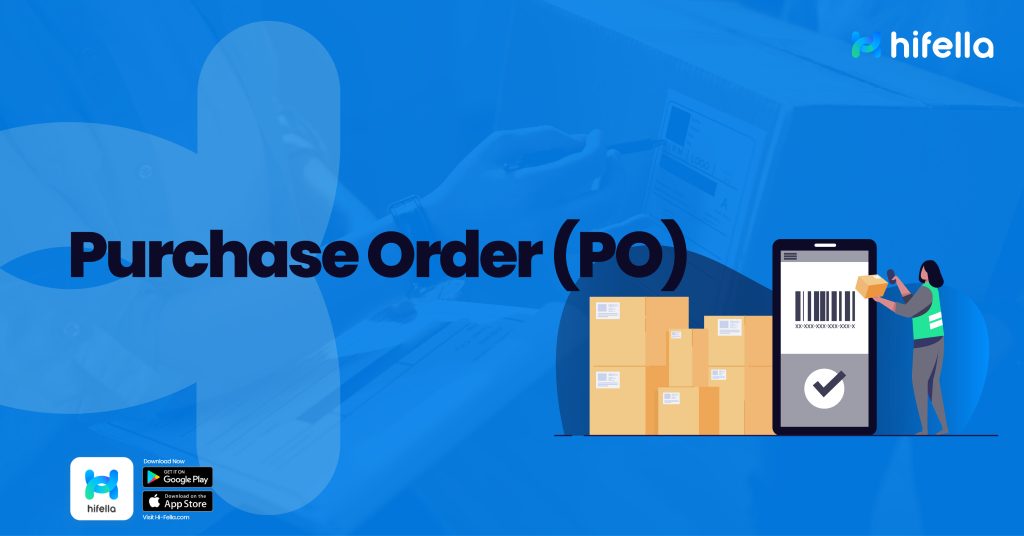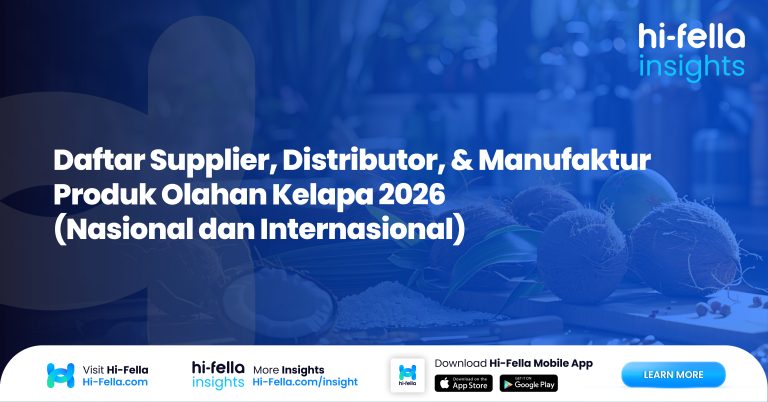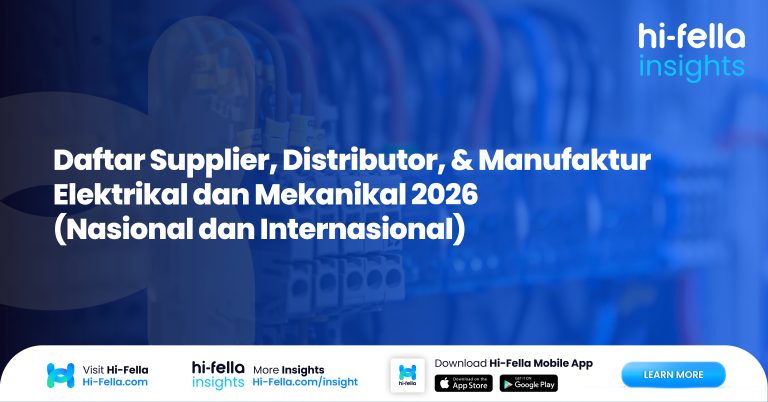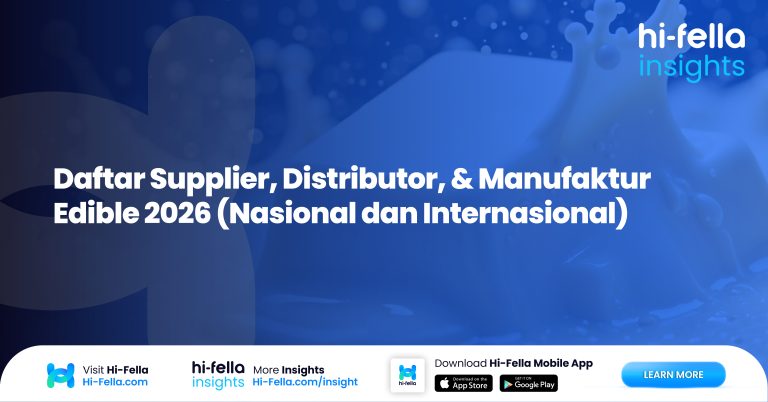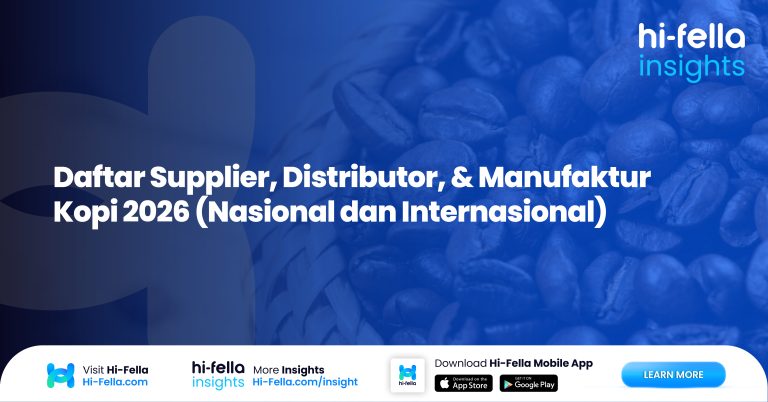Table of Contents
Dalam dunia bisnis pemahaman mengenai apa itu PO sangat penting diketahui karena PO atau purchase order merupakan dokumen yang dapat membuktikan bahwa setiap orderan atau pesanan yang dilakukan sudah sesuai dengan budget bisnis Anda.
Oleh sebab itu, artikel ini akan membantu Anda mendapatkan penjelasan secara komprehensif mulai dari apa itu PO dalam jual beli, komponen-komponennya, manfaatnya, proses penerbitan dan penggunaannya, serta memberikan contoh format dan struktur PO yang umum digunakan dalam industri. Simak selengkapnya!
Apa Itu PO dalam Jual Beli?
Purchase Order (PO) adalah dokumen resmi yang diterbitkan oleh pembeli kepada penjual sebagai bukti pesanan pembelian.
PO ini berfungsi sebagai kontrak antara pembeli dan penjual tentang detail barang atau jasa yang akan dibeli, termasuk jumlah, harga, dan syarat-syarat lainnya.
Komponen-Komponen PO
Setiap PO harus mencakup beberapa komponen penting, seperti yang dilansir oleh Procurement Express:
- Informasi pembeli dan penjual
- Nomor PO
- Deskripsi produk atau jasa
- Jumlah dan harga
- Tanggal pemesanan dan tanggal pengiriman
- Syarat pembayaran
Manfaat PO atau Purchase Order
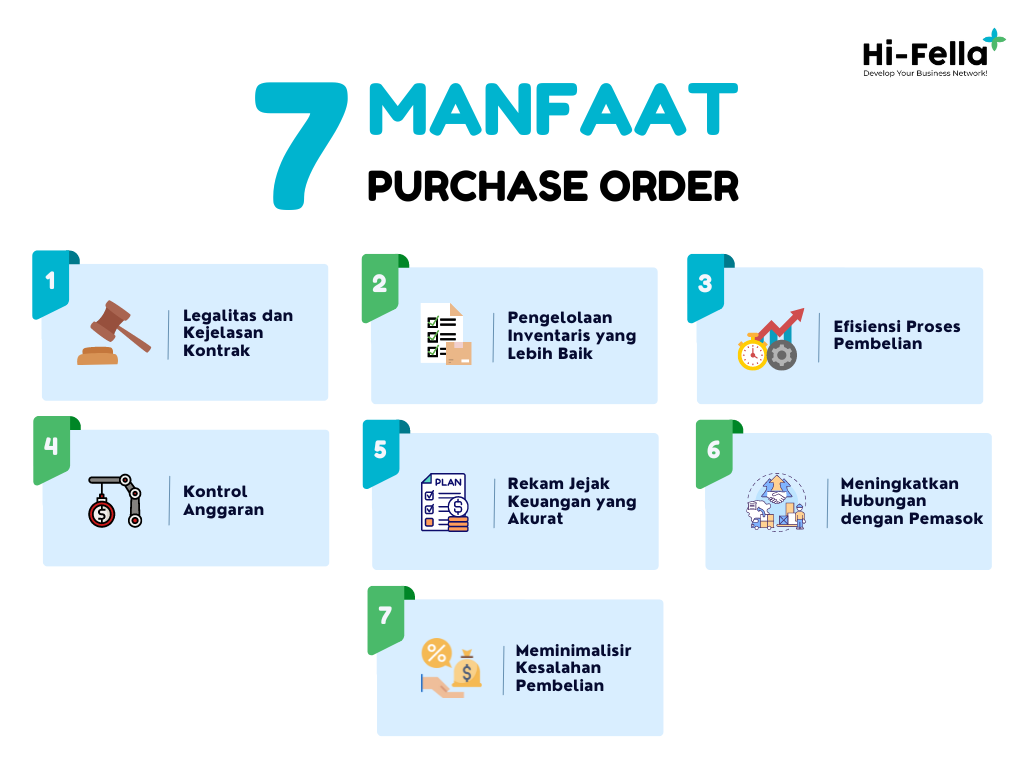
Setelah mengetahui apa itu PO dalam jual beli, PO atau Purchase Order juga memiliki beberapa manfaat penting, yaitu seperti:
1. Legalitas dan Kejelasan Kontrak
PO berfungsi sebagai dokumen legal yang memperjelas kesepakatan antara pembeli dan penjual.
Dengan adanya PO, detail tentang apa yang dibeli, berapa banyak barang, dan dengan harga berapa menjadi jelas dan mengikat kedua belah pihak sehingga dapat mengurangi potensi perselisihan.
2. Pengelolaan Inventaris yang Lebih Baik
Pemahaman tentang apa itu PO dalam jual beli membantu bisnis dalam mengelola inventaris mereka dengan lebih efektif.
Dengan PO, perusahaan dapat dengan mudah melacak jumlah barang yang dipesan, yang akan membantu dalam merencanakan kebutuhan inventaris dan menghindari kelebihan stok atau kekurangan.
3. Efisiensi Proses Pembelian
PO memudahkan proses pembelian dengan menyediakan template standar untuk transaksi. Hal ini dapat membantu dalam mempercepat persetujuan dan pemrosesan pesanan, sehingga memungkinkan perusahaan untuk mengoperasikan dengan lebih lancar dan efisien.
4. Kontrol Anggaran
Dengan menggunakan PO, perusahaan dapat lebih mudah mengawasi pengeluaran dan memastikan bahwa pembelian tidak melebihi anggaran yang telah ditetapkan.
Ini karena PO membutuhkan persetujuan dari pihak manajemen sebelum diterbitkan, yang berarti bahwa setiap pembelian telah melalui evaluasi biaya.
5. Rekam Jejak Keuangan yang Akurat
PO membantu dalam pencatatan keuangan yang akurat dan terperinci. Setiap transaksi dicatat melalui PO, yang memudahkan pelacakan pengeluaran dan memastikan bahwa semua pembelian terdokumentasi dengan baik, sangat membantu saat audit atau analisis keuangan.
6. Meningkatkan Hubungan dengan Pemasok
Memahami dan menerapkan apa itu PO dalam jual beli menunjukkan profesionalitas dan seriusnya bisnis dalam transaksi.
Hal ini dapat membantu membangun dan memperkuat hubungan dengan pemasok, karena menunjukkan komitmen untuk transaksi yang jelas dan terorganisir.
7. Meminimalisir Kesalahan Pembelian
Dengan detail produk, jumlah, dan harga yang jelas, PO mengurangi risiko kesalahan dalam pembelian.
Setiap pihak memiliki dokumen yang sama sebagai referensi, mengurangi kemungkinan kesalahan dalam pengiriman atau faktur.
Mengintegrasikan PO dalam operasional bisnis tidak hanya memberikan keuntungan dari sisi administratif dan keuangan, tetapi juga berkontribusi pada pembangunan hubungan yang lebih baik dengan mitra bisnis.
Dengan pemahaman yang baik tentang apa itu PO dalam jual beli, bisnis dapat beroperasi dengan lebih efisien, transparan, dan profesional.
Proses Penerbitan dan Penggunaan PO dalam Jual Beli

Sumber: Pexels
Memahami secara mendalam apa itu PO dalam jual beli tidak hanya mencakup definisinya tetapi juga bagaimana PO diterbitkan dan digunakan dalam proses transaksi bisnis.
Berikut ini adalah penjelasan lebih komprehensif tentang proses penerbitan dan penggunaan Purchase Order (PO):
1. Identifikasi Kebutuhan Pembelian
Proses ini dimulai ketika pembeli mengidentifikasi kebutuhan akan barang atau jasa tertentu. Ini bisa berdasarkan permintaan internal dari departemen lain, kebutuhan restock, atau inisiatif pembelian strategis untuk memenuhi tujuan bisnis.
2. Pencarian dan Seleksi Penjual
Setelah kebutuhan teridentifikasi, pembeli akan mencari dan mengevaluasi penjual yang potensial. Kriteria seleksi mungkin termasuk harga, kualitas, reputasi, dan kemampuan pengiriman.
Dalam tahap ini, pembeli bisa meminta penawaran atau proposal dari beberapa penjual untuk membandingkan penawaran terbaik.
3. Pembuatan dan Pengiriman PO
Setelah penjual dipilih, pembeli akan membuat Purchase Order. PO ini akan mencakup semua detail yang relevan tentang pembelian, seperti deskripsi barang atau jasa, jumlah, harga, syarat pengiriman, dan kondisi pembayaran.
PO kemudian dikirimkan kepada penjual sebagai permintaan resmi untuk barang atau jasa tersebut.
4. Konfirmasi Penerimaan PO oleh Penjual
Setelah menerima PO, penjual akan mengkonfirmasi penerimaannya. Konfirmasi ini bisa berupa penerimaan PO secara keseluruhan atau dengan catatan atau perubahan tertentu.
Tahap ini penting untuk memastikan bahwa kedua belah pihak sepakat tentang detail transaksi sebelum proses lebih lanjut.
5. Persiapan dan Pengiriman Barang atau Jasa
Dengan konfirmasi PO, penjual akan mempersiapkan barang atau jasa yang dipesan. Ini bisa mencakup proses produksi, pengepakan, dan pengaturan pengiriman.
Penjual bertanggung jawab untuk memastikan bahwa barang atau jasa disiapkan sesuai dengan spesifikasi yang disepakati dalam PO.
6. Penerimaan dan Inspeksi oleh Pembeli
Setelah barang atau jasa dikirim, pembeli akan menerima dan melakukan inspeksi untuk memastikan bahwa semuanya sesuai dengan yang dipesan. Jika ada masalah atau ketidaksesuaian, pembeli dapat menghubungi penjual untuk resolusi.
7. Proses Pembayaran
Setelah barang atau jasa diterima dan dinyatakan memenuhi syarat, proses pembayaran dapat dilakukan. Pembayaran biasanya dilakukan sesuai dengan kondisi pembayaran yang telah disepakati di dalam PO.
8. Penutupan PO
Setelah transaksi selesai dan pembayaran dilakukan, PO dapat dianggap selesai atau ditutup. Ini menandakan bahwa semua kewajiban dalam transaksi telah dipenuhi oleh kedua belah pihak.
Memahami proses penerbitan dan penggunaan PO sangat penting dalam menjawab pertanyaan “apa itu PO dalam jual beli.”
Proses ini tidak hanya membantu dalam melaksanakan pembelian yang efisien dan efektif tetapi juga memastikan bahwa transaksi dilakukan dengan kejelasan dan keamanan yang tinggi, meminimalkan risiko kesalahpahaman dan meningkatkan kepuasan kedua belah pihak.
Contoh Format dan Struktur PO
Contoh format PO biasanya mencakup:
- Header dengan logo perusahaan dan informasi kontak
- Tabel dengan detail produk atau jasa yang dipesan
- Tanda tangan dan tanggal dari pihak pembeli
Perbedaan PO dengan Invoice
Memahami perbedaan antara PO dan invoice adalah penting untuk mengelola keuangan dan operasi bisnis dengan efektif. Berikut adalah penjelasan singkat tentang perbedaan utama:
Purchase Order (PO)
Diterbitkan oleh pembeli untuk memesan barang atau jasa. PO berfungsi sebagai konfirmasi pesanan dan mencakup detail tentang produk yang dibeli, jumlah, harga, dan syarat-syarat lainnya.
Dengan mengetahui apa itu PO dalam jual beli adalah langkah awal dalam proses pembelian dan berfungsi sebagai dokumen yang mengikat secara legal antara pembeli dan penjual.
Invoice
Diterbitkan oleh penjual sebagai permintaan pembayaran kepada pembeli setelah barang atau jasa telah diserahkan atau disediakan.
Invoice mencakup detail tentang barang atau jasa yang disediakan, jumlah yang harus dibayar, dan informasi pembayaran. Invoice merupakan langkah akhir dalam proses transaksi, memicu proses pembayaran dari pembeli ke penjual.
Kesimpulan
Memahami apa itu PO dalam jual beli sangat penting untuk kelancaran transaksi bisnis. PO tidak hanya memastikan kesepakatan yang jelas antara pembeli dan penjual tetapi juga membantu dalam pengelolaan keuangan dan inventaris yang lebih efisien.
Untuk pengalaman berdagang yang lebih mudah dan efisien, perkenalkan Hi-fella sebagai platform pilihan Anda untuk berdagang secara internasional.
Hi-fella menawarkan solusi lengkap untuk kebutuhan bisnis Anda, dari pembuatan PO hingga pengelolaan transaksi. Yuk, coba sekarang!


